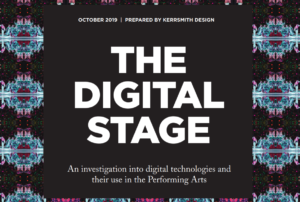The Ontario Arts Council has changed some of its grant program deadlines for this spring, and you can click through to details from this page. The OAC also has useful and regularly-updated COVID-19 FAQs on its website, here.
Minister’s Town Hall Meeting
This morning, March 26, Lisa Macleod (Ontario Minister of Heritage, Sport, Tourism, and Culture Industries) held a telephone town hall meeting with over 1250 stakeholders from across Ontario. Referencing both the province’s identification of essential services (on Monday evening) and the Economic Statement (issued on Wednesday), Minister Macleod outlined a number of measures that the Government of Ontario is taking to assist with relief and recovery of the sectors associated with the Ministry, as follows:
- The commitment to keep money flowing quickly through existing Operational Service Agencies such as the Ontario Arts Council, Celebrate Ontario, the Ontario Trillium Foundation and the Ontario Cultural Attractions Fund. The Minister did not reference any increases to funding: OC has asked the Ontario Arts Council for more information as it becomes available.
- The impending launch of a new Ontario Live online portal, where musicians, artists, libraries, museums and others can share their work with Ontarians. This is a partnership between the government and an array of artists, arts organizations, and such industry titans as Universal Music and Shopify.
- The re-tooling of the Ontario Music Fund to get funding into the hands of emerging artists quickly.
- Additional funding allocated to Tourism Development programs, which will be expanded to include Tourism Relief initiatives.
- Additional funding allocated to Destination Ontario to help rebuild tourism, once recovery commences.
- Permission granted to restaurants and bars to sell and deliver unopened packages of liquor in their stock.
- Funding for Ontario hotels to serve as overflow space for health care workers, those in quarantine, and people in need of shelter (whether because they are not securely housed, or other reasons).
- The extension of film and television tax credit to ensure that freelance workers in the industry have access to income during a period of time when production has ceased.
- The commitment to work with provincial sport organizations and athletes to ensure that athlete development efforts are not damaged by the cancellation of major amateur sports events in the province and around the world.
- The commitment to support existing Operational Enterprise Agencies (including the Royal Ontario Museum, Science North, etcetera) through the recovery period.

 As of April 13th, 2020, jobs posted on Orchestras Canada’s job board will require remuneration information. This could take the form of:
As of April 13th, 2020, jobs posted on Orchestras Canada’s job board will require remuneration information. This could take the form of: